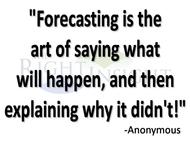Weather and Climate
- By:
- Edward A. Reid Jr.
- Posted On:
- Oct 15, 2019 at 6:00 AM
- Category
- Climate Change
Weather changes on all time scales. Some weather changes are predictable in general terms: summer will be relatively warm; winter will be relatively cool. This change occurs every year, driven by the seasonal change in the angle of incidence of the solar radiation striking the earth. However, some summers and winters are relatively warmer or cooler than others. Also, the spring and fall transitions between summer and winter can vary significantly. The historical differences can be documented and essentially constitute the range and pattern of temperature variation and the average temperature over various 30-year climate periods. However, prediction of the seasonal and annual variations over the succeeding 30-year climate period is beyond our current ability.
Seasonal and annual weather are affected by anticipatable but unpredictable weather and climate events. These weather events include El Nino and La Nina, which are not currently predictable in either timing or intensity. They also include previously undocumented events, such as the formation of the warm “blob” in the northern Pacific. The climate events include the Pacific Decadal Oscillation and the Atlantic Multidecadal Oscillation, which transition between their warm and cool phases over relatively predictable cycles, though the timing of each transition is uncertain. These climate events have different global impacts when they are both in either their warm or cool phases and when they are in different phases.
Other common weather events including droughts and floods, tropical cyclones and tornadoes appear not to have documented impacts on global climate; and, there is no documented impact of global climate on these weather events, although attribution studies suggest that climate change has such an impact. Historical observation identifies areas which are susceptible to these weather events and the seasons in which they are most likely to occur. However, we are currently unable to predict the specific incidence, timing, path and intensity of tropical depressions and whether they will develop into tropical cyclones of some strength. We are also unable to predict the incidence, location, timing, duration and severity of droughts and floods. Tornadoes are even less predictable.
Our inability to predict tropical cyclones is highlighted by the recent 12 year “drought” of strong tropical cyclones striking the US, followed by a year in which 3 strong storms did so. Our inability to predict droughts is highlighted by the declarations of “permanent drought” in California and Texas, followed by the end of each of these droughts. Similarly, predictions of “the end of snow” were proven incorrect in numerous locations over this past winter, including in California. Similarly, predictions of an “ice-free Arctic” continue to be incorrect.
Climate is essentially the sum of weather over a 30-year period. Therefore, if we are largely unable to accurately predict weather events on longer time scales, it seems unlikely that we would be able to accurately predict climate (the sum of weather) over longer time scales. The fact that we have been unable to accurately predict global annual temperature over the 1981-2010 climate reference period supports the unlikelihood of accurate predictions in the longer term.


